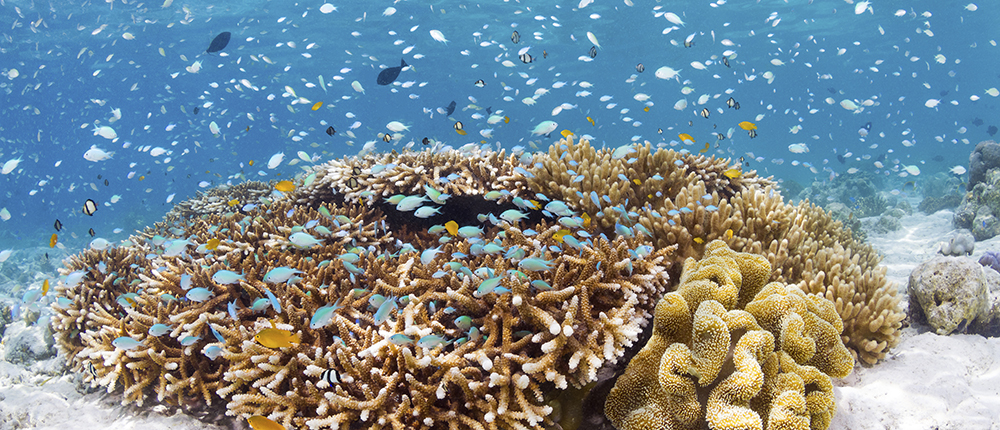Wakatobi’s Shallow Water Freedom
Wakatobi Resort draws divers from around the world. They come to experience some of the most pristine and bio-diverse coral reef environments on the planet and enjoy exemplary services amid the comforts of a boutique beach resort. But many guests who make their way to this remote and scenic corner of Indonesia never don a scuba tank. Instead, they opt for the simplicity of snorkeling for their marine explorations. And rather than being limited to a few shallow reefs near the resort, snorkelers can enjoy the full Wakatobi experience. Many of the same sites that wow scuba divers at depth provide spectacular vistas when viewed from the surface.
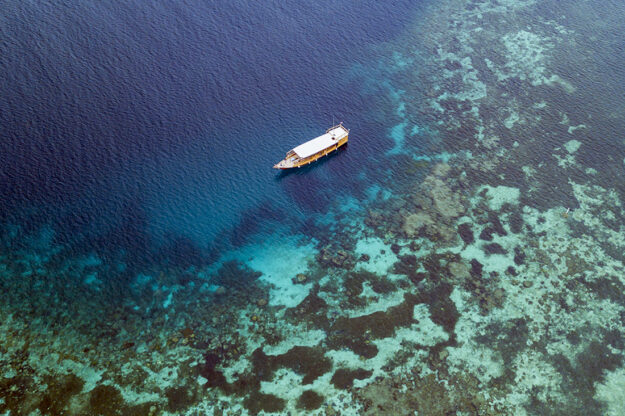
At Wakatobi, many of the reef crests rise to within a few feet of the surface, with outer flanks that drop into the depths, putting snorkelers in a lively zone where reef and open water fish mingle. Photo by Wayne Osborn
Ideal conditions
There are several reasons why Wakatobi is an ideal destination for snorkelers. The first is the nature of the seascapes found throughout the resort’s marine preserve. Snorkeling is best when subjects are close to the surface, where ample ambient light makes it easy to get a good look at what lies right below. In the waters around Wakatobi, reef crests often rise precipitously from the depths to within a few feet of the surface. The cliff-like edges of these reefs provide dramatic views and also put snorkelers in a lively zone where reef and open-water fish mingle.
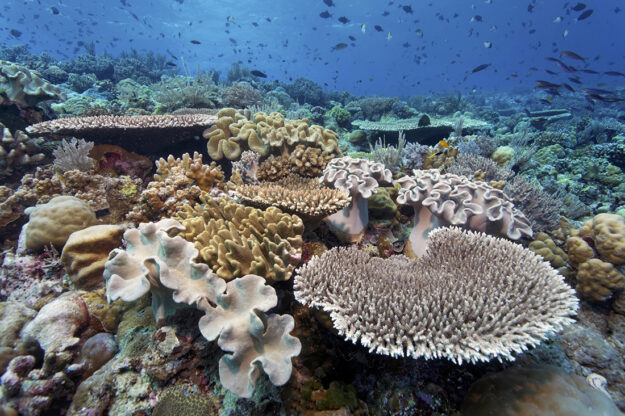
The shallow reefs of Wakatobi provide dramatic views and put snorkelers in a lively zone where reef and open-water fish mingle. Photo by Walt Stearns
But grand vistas are just the beginning. Wakatobi’s reefs are rich in marine life. The region is known as the most bio-diverse coral ecosystem in the world. With no limit on the time they can hover and watch, snorkelers will discover hundreds of fascinating species of fish and invertebrate life. Favorable water conditions further enhance the snorkeling experience. Most sites are sheltered from waves, and winds are typically light. This makes for favorable conditions for snorkeling, as do the warmth and clarity of the water.
A guest favorite
Many guests rate Wakatobi as their favorite snorkeling destination such as John and Barbara Pratt. “We’ve done a fair bit of snorkeling throughout the world,” says John. “The Caribbean, the Maldives, Australia… and snorkeling at Wakatobi has been by far the best. The reefs are pristine, there’s so much live, healthy coral, and a remarkable volume of life. It all exceeded our expectations.”
“Not only are the depths shallow to make snorkeling easy and more fun, the reefs are very healthy, and loaded with many types of corals and all kinds of fish and invertebrates — many more than we have ever seen before.” ~Alice Hawke
Veteran travelers Alice and Edward Hawke seek out destinations that are suitable for both snorkeling and diving. “The problem with snorkeling reefs in many areas is that they are not particularly colorful or alive with marine life,” says Alice. “Wakatobi more than fits the bill.”
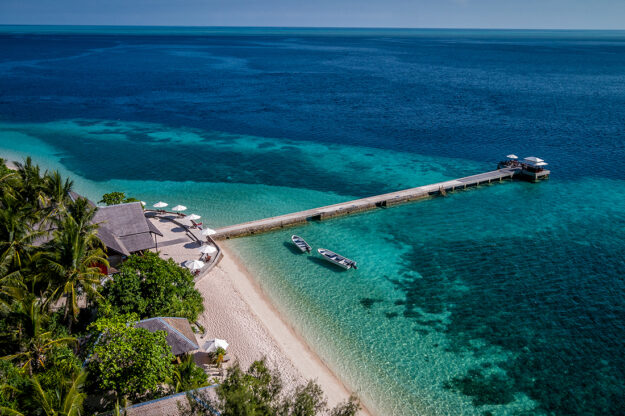
Snorkelers need not swim far to discover one of Wakatobi’s premier snorkeling sites, the House Reef, which has been called the best shore dive in the world. Photo by Didi Lotze
“Within minutes of entering the water on the House Reef I knew I had to come back,” said guest Stephen Hodgin. “Normally, we never do repeat trips to a destination, as there is so much to see in this world. But Wakatobi is different, and many of the other guests we spoke with were repeat customers.”
Snorkeling close to home
Snorkelers need not swim far to discover one of Wakatobi’s premier snorkeling sites. The resort’s House Reef has been called the best shore dive in the world. Just yards from the beach, a seagrass bed sits inside a fringing reef that extends far to either side of the resort. This ecosystem is home to thousands of species of fish, coral, and other marine life.
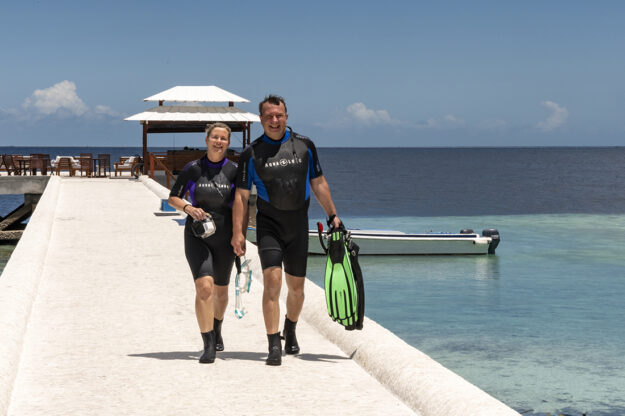
“Our experience at Wakatobi by far exceeded our expectations, and once we put our heads in the water it was even more,” said Dirk Wichner and Dr. Anja Bossow. “The house reef is unbelievable,” Dirk said, “and there are so many other beautiful sites to snorkel and dive.”
Accessing the House Reef is as easy as wading out from shore, or descending the ladder from the resort’s jetty. There is a wealth of subjects to be discovered within a few fin kicks of the jetty. There are numerous species of anemonefish at the top of the reef, and snorkelers have a good chance of seeing Broadclub cuttlefish on the prowl, their bodies lit in pulsing displays of color. In addition to the many reef dwellers that lurk among the crevices of the reef top, all manner of fish pass by in the deep water that begins just beyond the edge of the reef.
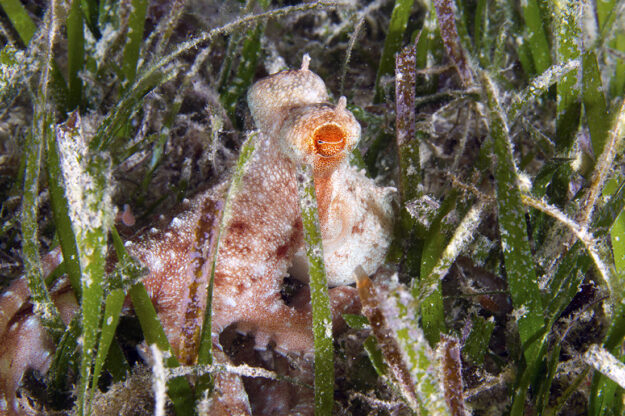
The seagrass meadows between Wakatobi’s beach and house reef are home to many interesting creatures, such as frogfish, eels, pipefish, and octopus (seen here). Photo by Walt Stearns
For even more diversity of marine life, snorkelers can venture inshore to the grass beds that lie between reef and beach. Here, octopus, pipefish, crabs, and eels slither and scuttle about, while juvenile fish find shelter and sustenance among the undulating grasses of this undersea meadow.
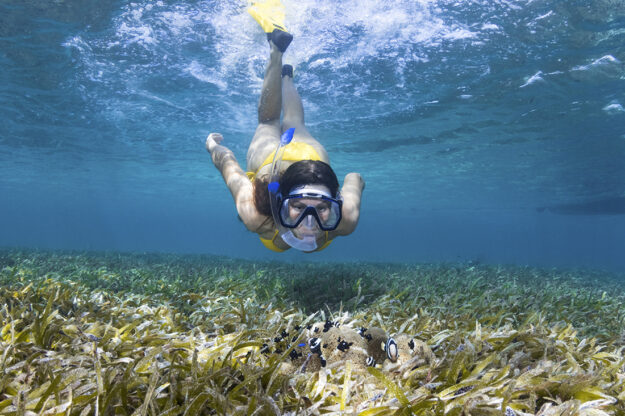
It’s easy to traverse the seagrass beds at mid to high tide when water depths are greater than two feet. Photo by Walt Stearns
While the reef tops are often best viewed at low tide, when corals are closest to the surface, it’s easiest to negotiate the grass beds at mid to high tide, when water depths are greater than two feet. “I snorkeled quite a bit on the outer edge of the House Reef and around the pier in the sand,” says guest Paul Moliken. “Next time, I plan to explore all there is in the seagrass beds.”
Snorkelers can begin their explorations of the House Reef at any time from dawn to after dark. To reach more distant parts of this expansive reef system, they can be dropped off by taxi boat for a leisurely snorkel excursion along the reef back to the resort.


